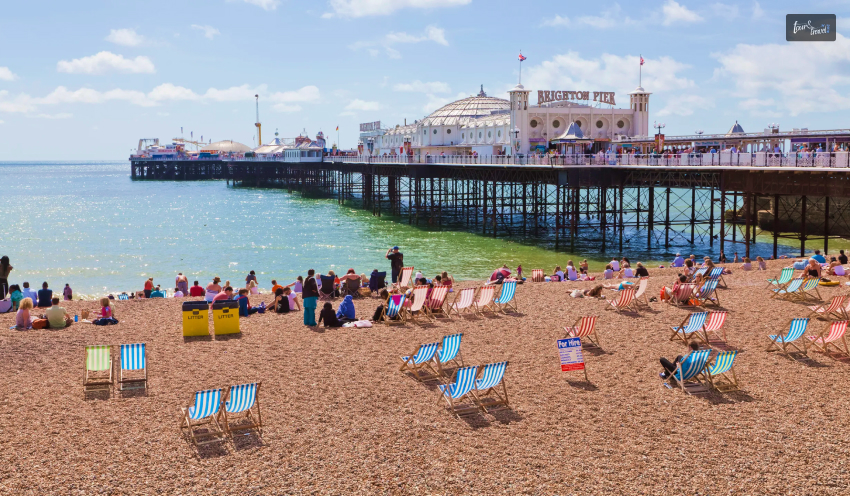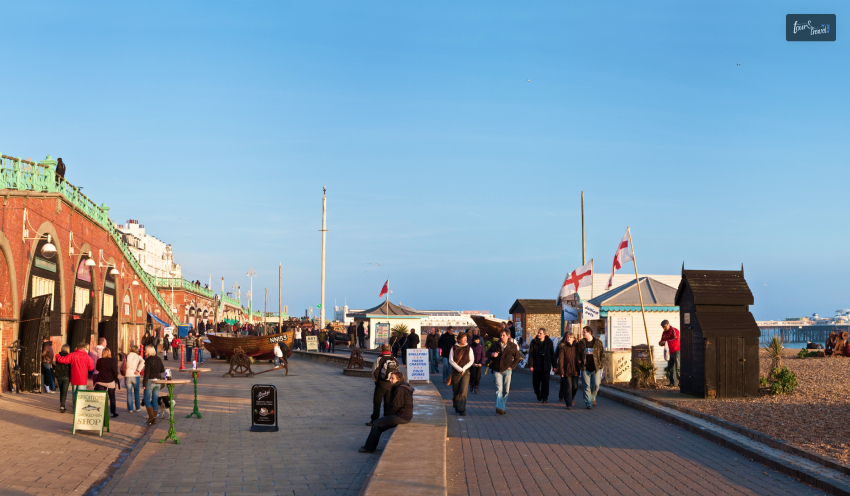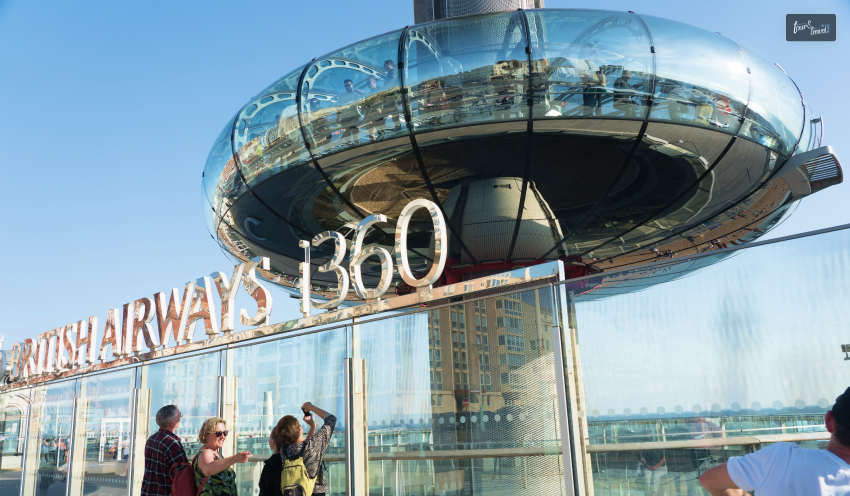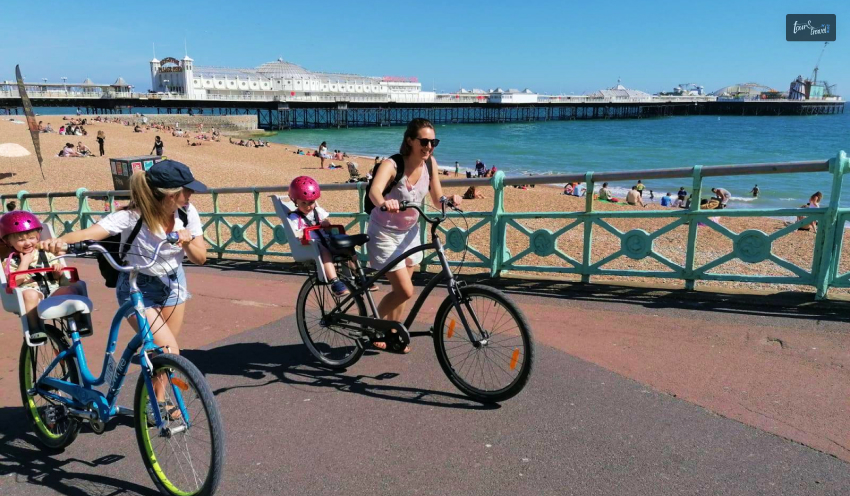What Is The Closest Beach To Nashville?
BY Sibashree Dec 8, 2022
I love beaches. But, also, I really love Nashville. So, you can guess the sad part here. The last time I went to Nashville, I had to come back dry and without an tan. But, the, I thought, there must be some beaches which are close to nashville, right? Also, why stick to the same beaches in the Nashville area, or even in and around? Have you thought about venturing out to beaches a little farther away? Additionally, you can also check out the closest beach to Nashville or even some of the closest beaches near Nashville. Additionally, Nashville is a popular tourist attraction on prestigious lists like the New York Times’ 52 Places to Go. Also, I must say that it has a colorful history, great heritage, and architectural excellence. However, if you want some coastal fun and some sultry sunbathing seasons, the beaches around Nashville will be your ultimate call! Closest Beach To Nashville – Top 10 Beaches You Can Visit So here you are, searching for the closest beach to Nashville, TN! And here we are with a curated list featuring the best beaches near Nashville. Also, “The Music City” is the door to cool sand and water pursuits. Let’s check out the names. 1. Dauphin Island, Alabama: Dauphin Island in Alabama is fairly close to Nashville, and it will take you about 7 hours to drive to Mobile since the island is located in the southern part of Mobile. You can also fly to Mobile. Spend time playing with the waves and collecting seashells, or take a ferry and visit the beautiful Fort Morgan to check out some dolphins. Also, you must not miss out on other prime tourist spots nearby, like, Fort Gaines, Bird Sanctuary, and The Estuarium. So, it is quite idyllic and a family-friendly island with beautiful attractions such as the Alabama Aquarium, Mobile Bay Ferry, and others. Additionally, excitement, wildlife, and southern culture are quite apparent in and around Dauphin Island, which has white sand and blue water. Best Time To Visit Estimated Cost Driving/flying hours from Nashville Spring (March-May), Fall (October-November) $350 to $1,000 560 miles 2. Gulf Shores, Alabama: While looking for beaches near Nashville, TN, there’s no way you can forget about the Gulf Shores in Alabama. It’s pretty popular among tourists, especially Tennessee residents. Located only a seven-hour drive away from Nashville, the area boasts several lodging options, activities, and fresh seafood. The area has amusement parks, entertainment zones, shopping opportunities, and more. Plus, if you love educational activities and history, there’s much to do in this area. So just pack your bags already – because the beach awaits you! With its warm and soothing water, Gulf Shores also has bright white beaches. You can perform daytime activities such as dolphin-watching, hiking, and scenic cruises. There is an Alabama Gulf Coast Zoo and a recreation center with bumper boats called The Track, where you can visit with your family. Best Time To Visit Estimated Cost Driving/flying hours from Nashville Fall (September to November) and spring (March to May) $210 7-8 hours Gulf Shores is about to get a Goodwill Center. The 50,000-square-foot facility in Foley will offer job and employment training to the local people. With time, it will likely be developed as a community development center. The center is likely to open its doors in the fall of 2025. Then, it will be an added attraction to the places of interest. 3. Pensacola, Florida: There are several beaches close to Nashville but Pensacola, located in Florida, stands out because it will take you less than seven hours to drive from Nashville! Popular for its charming historic culture and exquisite natural beauty, Pensacola is a must-visit. Spanning over eight acres, the historic village of Pensacola is timeless. From golfing and go-karting to other fun activities, there’s so much to do when you are bored of the beach. Pensacola is also known as ‘the city of five flags’ since it was passed around in History – you will spot British, French, Confederate, American, and even Spanish flags all over this charming city. The beach is at the panhandle of Florida surrounded by coastline across 50 plus miles. There is crystal clear bay areas and emerald-green Gulf of Mexico waters; thus, when you visit the beach, you can find a vibe that mixes a bustling metropolitan center and a relaxing beach town! Best Time To Visit Estimated Cost Driving/flying hours from Nashville Spring (March-May) and Fall (September-November) $340 6 hours 39 minutes 4. Destin, Florida: Why aren’t you considering Destin, located in Florida? Driving to Destin from Nashville will take only around seven hours! Destin has been a prime vacation spot for families! There are several places to eat – you could check out the popular chain dining, Whataburger! Then there are so many outlet stores for you to visit if you love shopping. If you are traveling with kids, then you have to check out the following places, The Gulfarium Marine Adventure Park, Local Zoo, and Big Kahuna Water Park (only if you travel to Destin during Summer!) Located in northwest Florida, the area of Destin Beach is called Panhandle! There are natural trails through the dunes of Henderson Beach State Park. There are beautiful oak trees and pine trees where they provide wildlife shelter. Also, there are waterfalls, pools, tall slides, and Big Kahuna’s water park, so you can explore all these places. The emerald-green waters of the beach are breathtaking, and the geology is unique! Best Time To Visit Estimated Cost Driving/flying hours from Nashville Spring (April-May) and Fall (September-November) $105 7 hours 5. Panama City, Florida: It’s not like there are no beaches in Tennessee. Of course, Tennessee has beaches, but sometimes, venturing a little away from home feels so much better! And how can you ignore Panama City, located in Florida? Famed as a destination for Spring Break, it will take you about 7.5 hours to drive to Panama City from Nashville. You can also opt for direct flights. The beaches span 27 miles, and Panama City farther boats about a hundred public accesses. While you are in Panama City, you must visit Pier Park – you will spot several restaurants, playing areas, bungee jumping opportunities, bumper boats, sky wheels, passenger trains, and plenty of places to shop. Best Time To Visit Estimated Cost Driving/flying hours from Nashville Fall (September-November) and Spring (March-May) $106 7.5 to 8 hours 6. 30A, Florida: People in the Middle Tennessee area either have or know others with bumper stickers with 30A on them. This is because 30A has now become perhaps one of the most well-known getaway spots for most residents of Nashville! And that too throughout the whole year. 30A is not your regular Nashville beach! Instead, it’s a pretty coastal highway with solid touristy spots, like, Miramar Beach, Rosemary Beach, Santa Rosa Beach, and Blue Mountain Beach. Best Time To Visit Estimated Cost Driving/flying hours from Nashville Spring (March-May), Fall (October-November) $105 7 hours 25 minutes 7. Tybee Island, Georgia: Tybee Island might not be the closest beach to Nashville, but that doesn’t mean it’s that far away – you can either drive to Tybee Island in the Savannah region or even directly fly to Savannah. If you drive, it will take you more than eight hours; if you take a flight, it will take a little less than two hours. An Atlantic getaway that’s historical – this is exactly what Savannah stands for! Steeped deeply in culture and history, there’s so much to see and do. Explore the local restaurants and shopping outlets at the lighthouse near Tybee Island to make the most of your stay here. Best Time To Visit Estimated Cost Driving/flying hours from Nashville Spring and summer $210 8 hours 6 mins 8. Gulfport, Mississippi: While looking up the closest ocean beach to Nashville, TN, it’s impossible not to stumble upon Gulfport, located in Mississippi. The entire Mississippi coastline is unforgettable. It takes about seven hours to drive from Nashville, or you could also do something adventurous and fly to New Orleans – it will be worth the trip! The area boasts miles of beaches known for their beautiful sand, fun attractions, and exciting water activities. Once you are done spending time on the beach, don’t forget to check out, The Gulfport children’s museum, INFINITY Science Center, a space facility by NASA, A famous aquarium, Drag racing, Waterparks, and The railroad museum. Best Time To Visit Estimated Cost Driving/flying hours from Nashville March through May $200 1 hour 21 minutes 9. Charleston, South Carolina: Move any beach in Tennessee over, because it’s time for Charleston to shine! Yes, it will take you more than 8 hours to drive to Charleston, located in South Carolina, or a flight of 1.5 hours, but who cares? It will be worth the journey. Another coast town in the Atlantic steeped deeply in history, this place is perfect for visiting with your family, especially kids. If you love visiting historical spots, you have to visit Fort Sumter. And that’s not all! Pamper yourself with some spa time and some golfing while your kids can enjoy the children’s museum and the aquarium. You will also get to see some world-class restaurants, sandy beaches, and cobblestone paths. The easiest way to enjoy South Carolina is to dip your toes in the white sand and enjoy the beautiful weather. It is perfect for frolicking as you can walk across the sand and visit the lighthouses. The beaches are wild hence, you gotta have a towel and a sturdy shoes to enjoy your best! Best Time To Visit Estimated Cost Driving/flying hours from Nashville spring (March-May) and fall (October) $124.58 9-10 hours 10. Myrtle Beach, South Carolina: It is not the closest beach to Nashville if you have a packed itinerary. It will take you about nine hours to drive to Myrtle Beach, but it’s so worth the drive. We say keep at least three to four days in hand while going to Myrtle Beach in South Carolina! From cheering the baseball team and Pelicans, riding the gigantic Ferris wheel, visiting New South Brewing MicroBrewery, or even having a night out at some local dinner theater, there’s so much to do here. Myrtle Beach has a subtropical climate, with 86 golf courses and 1800 restaurants to visit. The Myrtle Beach Area Fact Sheet states that around 17 million people visit Myrtle Beach annually. If you plan to visit the beach, you can take your family to the Kingdom amusement park. If you love adventure, the SkyWheel is the way to go, considering it is one of the tallest Ferris Wheels in the world. Best Time To Visit Estimated Cost Driving/flying hours from Nashville June through August $129 9 hrs 26 min In 2024, Myrtle Beach was the top trending destination for the Memorial Day weekend in the USA, according to Booking.com reports. Tripadvisor also featured it as the second-most coveted destination for the Memorial Day weekend 2024. 11. Anderson Beach, Tennessee At just 17 miles from Nashville, Anderson Beach is a popular picnic spot in Tennessee. You will enjoy amenities like picnic grills, tables, and cheap parking sites at this closest beach to Nashville. You must pay $5 to park your vehicle for the entire day. Also, restrooms and a shelter make your time at the beach more comfortable. Further, on Percy Priest Lake, Anderson Beach is great for canoeing and kayaking. You can even swim in the lake water for a rejuvenating experience. The water here is tranquil, with allocated swimming areas. You can relax in the wooded area if you are not in for adventurous outdoor pursuits. Frequently Asked Questions!!! (FAQs): Check out the most frequently asked questions related to the closest beach to Nashville, mentioned below. 1. What Is The Closest Ocean Beach To Nashville? Ans: Although Nashville itself doesn’t have any sea beaches, the closest beaches to Nashville are as follows,• Pensacola, • Panama City Beach, • Tybee Island, • Hilton Head Beach, and • Gulf Shores. 2. What Is The Best Beach In Tennessee? Ans: The best beaches in Tennessee are as follows,• Big Ridge Lake, • Cheatham Lake, • Cherokee Lake, • Chickamauga Lake, and • Center Hill Lake. 3. What Is There To See Between Nashville And Gulf Shores? Ans: The top tourist spots between Nashville and Gulf Shores are as follows,• Lotz House Museum,• Stones River National Battlefield, • Carnton, • Vulcan Park & Museum, • U.S. Space & Rocket Center, and • Jack Daniel’s Distillery Visitor Center. 4. What Is The Most Beautiful Town In Tennessee? Ans: The most beautiful towns in Tennessee are as follows,• Gatlinburg, • Townsend, • Bell Buckle, • Rogersville, and • Jonesborough. And It’s A Wrap! Finding the closest beach to Nashville proved to be an adventure, considering we made sure that you are aware of all your options! So now what? What are you still doing here? Pack your bags and get this trip started! All you have to do is plan a kickass trip and make some memories to treasure forever. In the meantime, don’t forget to share your thoughts and if you have any related past experiences in the comments below.




















